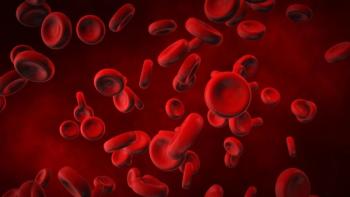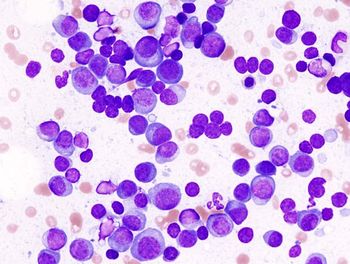
- Oncology Vol 28 No 1S
- Volume 28
- Issue 1S
(P147) Long-Term Outcomes of High-Dose-Rate Interstitial Brachytherapy for Gynecologic Malignancies
In this study, we perform a single-institution retrospective analysis of outcomes of patients treated with high-dose-rate interstitial brachytherapy (HDR-ISBT) for gynecologic malignancies. Locoregional control (LRC), disease-free survival (DFS), overall survival (OS), and long-term toxicity were evaluated.
Jehee Choi, MD, Tony Y. Eng, MD; University of Texas Health Science Center, San Antonio
Purpose: In this study, we perform a single-institution retrospective analysis of outcomes of patients treated with high-dose-rate interstitial brachytherapy (HDR-ISBT) for gynecologic malignancies. Locoregional control (LRC), disease-free survival (DFS), overall survival (OS), and long-term toxicity were evaluated.
Materials and Methods: Patients treated with interstitial brachytherapy for gynecologic malignancies between 1990 and 2013 at the Cancer Therapy and Research Center were identified. Thirteen patients treated from 2008 to 2013 were reviewed for the primary phase of analysis. Site of primary disease was predominantly cervix, with other sites of primary disease to include the vagina and vulva. Patients were treated with a combination of external beam radiation therapy (EBRT) and HDR-ISBT. All patients had locally advanced disease, International Federation of Gynecology and Obstetrics (FIGO) stage IIB–IVA. EBRT dose ranged from 4,500–7,440 cGy to at least the whole pelvis, while HDR-ISBT dose ranged from 1,000–2,900 cGy delivered in 500–700-cGy fractions. HDR-ISBT was delivered via modified Syed applicators on a twice-daily schedule, once per week, with fractions separated by at least 5 hours. Most patients received chemotherapy concurrently with radiation treatments.
Results: Of 12 patients with available follow-up data, 1 patient developed local failure. Three patients developed distant metastatic disease. DFS and OS analyses were deferred for final analysis of all patients to be included in our study. Radiation Therapy Oncology Group (RTOG) grade III late toxicity was seen in two patients in the form of severe urinary incontinence, intractable pelvic pain, vesicovaginal fistula, cystitis, and fibrosis. Two patients experienced RTOG grade IV complications, with development of vesicovaginal fistula requiring surgical repair and skin necrosis requiring surgical debridement (latter complication in patient treated for vulvar cancer). Thus far, no RTOG grade V late complications have been noted.
Conclusion: On preliminary analysis, HDR-ISBT appears to be an effective alternative for dose escalation in patients with locally advanced gynecologic malignancies in whom delivery of standard intracavitary BT is not a recommended or feasible option. Acceptability of the toxicity profile from this combined-modality radiotherapy approach requires further evaluation. Expansion of our review to include patients treated prior to 2008, as well as further investigation of the outcomes of those patients initially lost to follow-up, will provide a valuable added perspective to the limited body of existing data evaluating the long-term efficacy and toxicity of this specialized modality of radiotherapy.
Articles in this issue
Newsletter
Stay up to date on recent advances in the multidisciplinary approach to cancer.

















































































